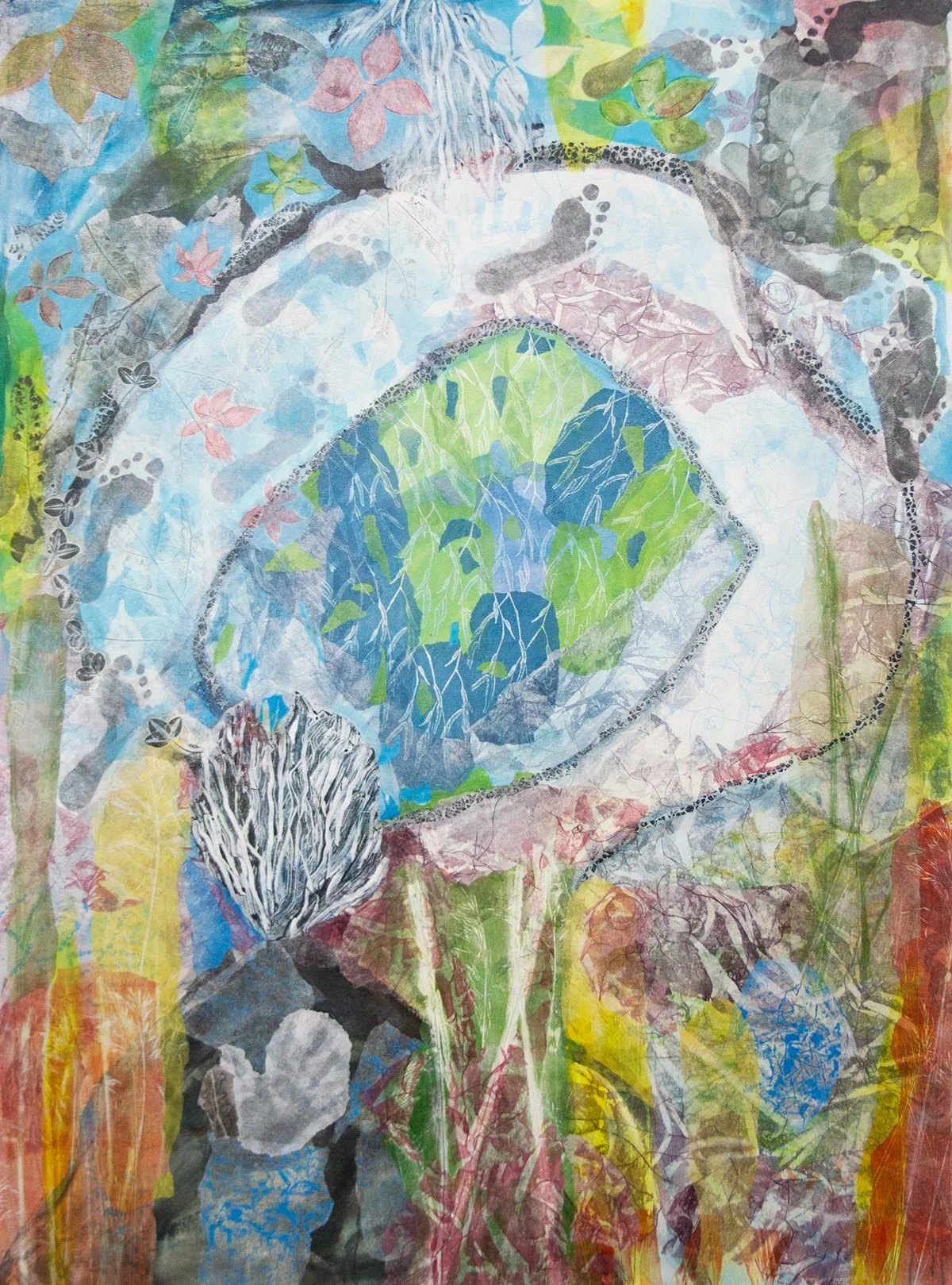Mapping Place Cells
Mapping Place Cells is a mixed-media project that builds relationships with the people, plants, and trees of the traditional territory of the Sinixt tum-xula 7xw. Through inquiry and exploring land-based practices I map my lived experience as an uninvited guest on this land, creating a series of large format collage paintings on unstretched canvas.
Sinixt matriarch and knowledge keeper, Marilyn James and The Blood of Life Collective have agreed to assist me in learning indigenous protocols including the whuplak'n t which teaches how to take care of everything on this landscape, and smum iem meaning ‘belonging to the women’. Women play a central role in Sinixt laws and how people behave on the landscape. I am learning about the law of this land and more about the trees and plants that reside here and how I can be in better relation.
Traditionally maps are used as a guide, a reference before, and sometimes during, travel. Colonial maps were used to describe and segment space, defining boundaries, exploitable resources and to document ownership. I am interested in creating an alternative approach to mapping place: a cognitive mapping of experience. Place cells are found in the hippocampus of the brain and in this work correspond to real places in the landscape. The 'cognitive map' hypothesis proposes that the brain builds a unified representation of the spatial environment to support memory and guide future action.
I am creating a series of large (4ft x 6ft) cognitive maps of place utilizing printmaking, rubbings and acrylic painting on unstretched canvas. These methods explore placemaking and have begun with research, relationship building and learning involving the trees and plants of Sinixt tum xúlaʔxw (traditional territory). Knowledge shared by Sinixt matriarch, is informing the creation of this series of place cells on rice paper. Following Sinixt gathering protocols, I am creating an archive of hundreds of place cell images. These place cells form literal connections to non-human life. This process is guided by curiosity and a commitment to being receptive and present through an embodied engagement with my surroundings. When back at the studio,
impressions of the collected materials are carefully made in the form of monoprints, collagraphs and rubbings on rice paper, creating delicate replications of their material state. These printmaking techniques manifest change and transformation through image reversal and the indirect nature of their creation. This process acknowledges the shift from the in-person reality to the cognitive mapping of the experience and environment.
Through these maps of embodied environments, themes of regeneration through reciprocity are explored and new pathways and possibilities created. Through slow and deliberate processes, elaborate and complex systems evolve where improvisation, form and space, foregrounds the physical, visceral and tactile experience.
I feel acutely aware of the fragility of this ecosystem due to the impacts of climate change and our colonial history. But reflecting on the words of Robin Wall Kimmerer I come to this new series of work choosing joy; “because joy is what the earth gives me daily and I must return the gift.” This is reflected in my use of colour, where primary and secondary colours combine with earth hues. The relationships I create will speak to the hope and need for closer connections, understanding, gratitude and reciprocity.




